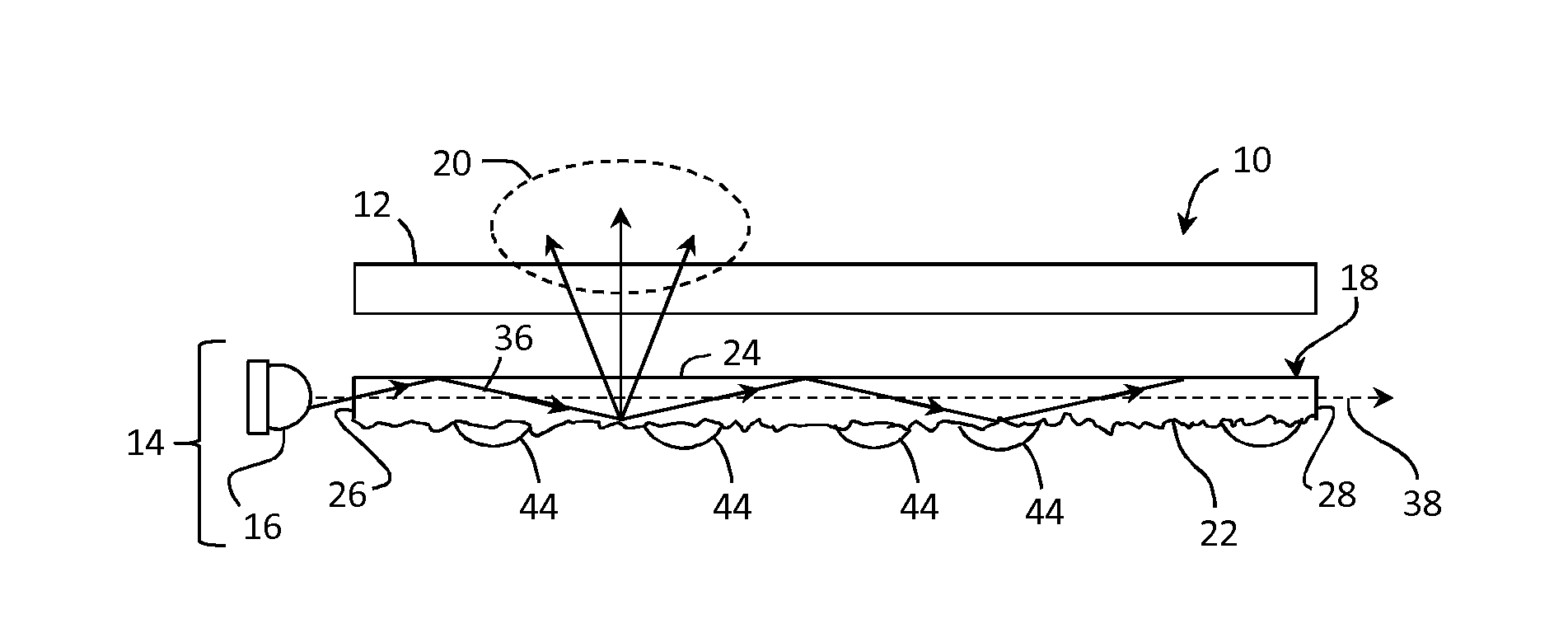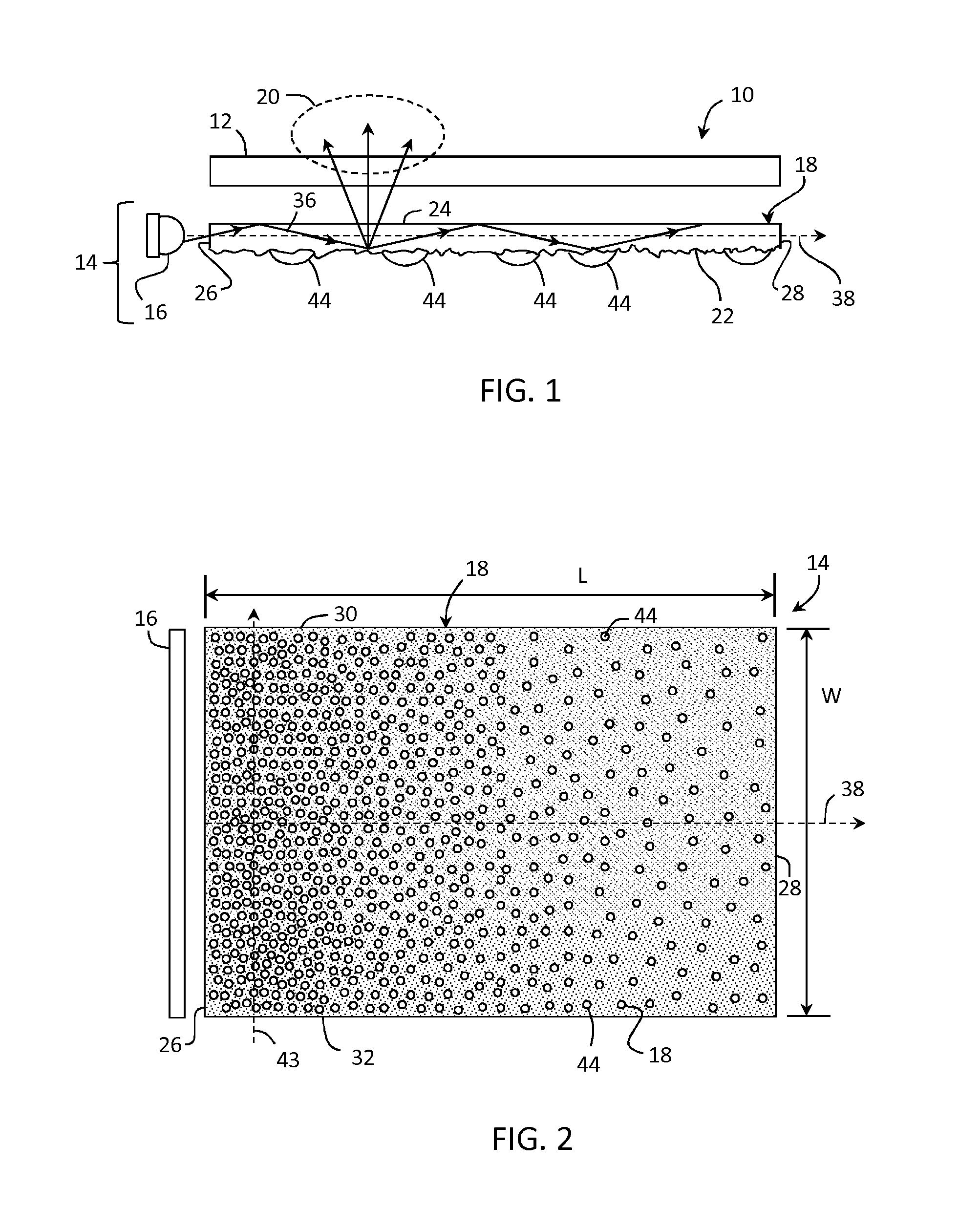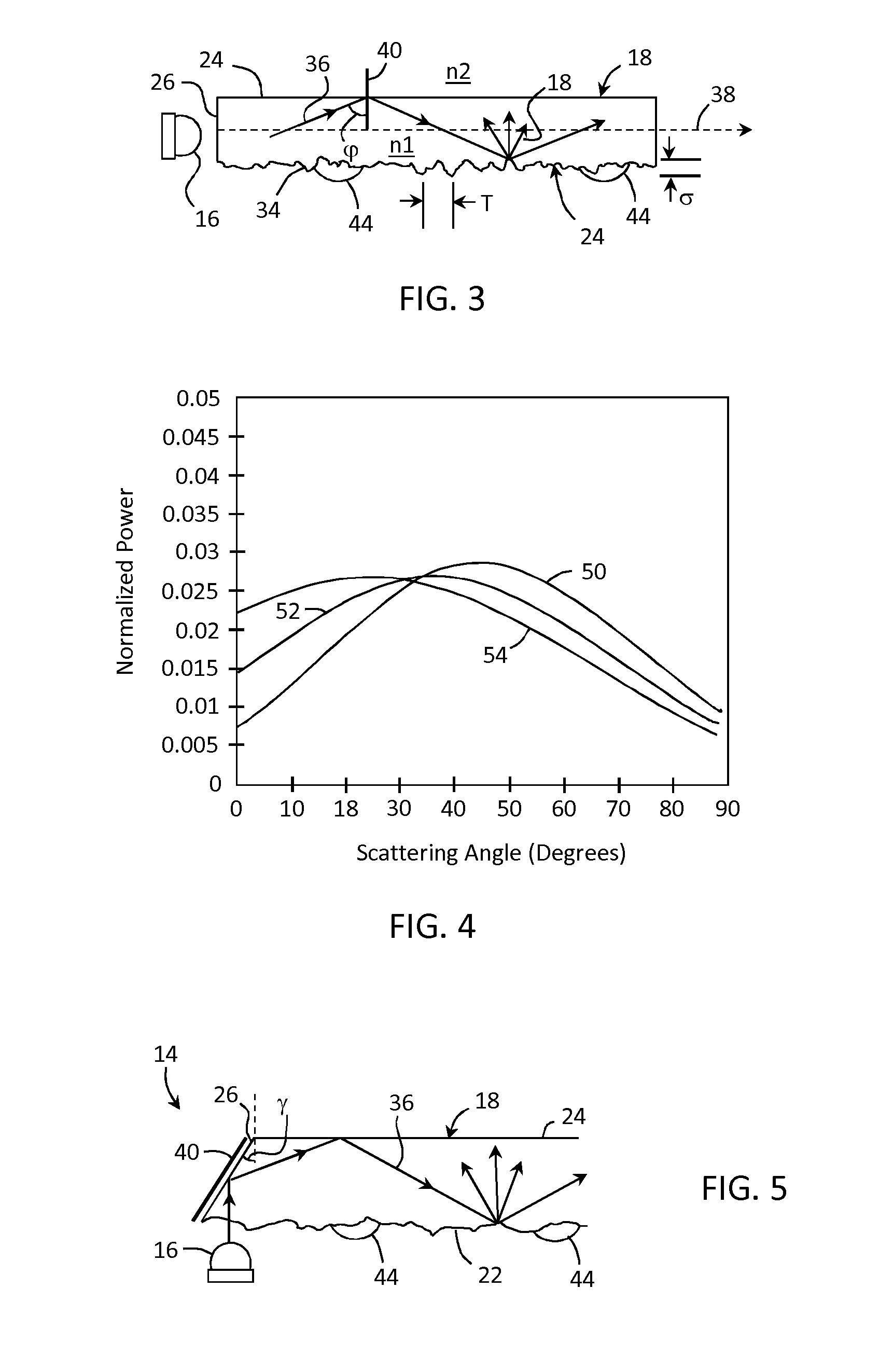Textured surfaces for display applications
a technology of textured surfaces and display applications, applied in the direction of diffusing elements, mechanical instruments, instruments, etc., can solve the problems of affecting the appearance of the display, the contrast ratio of the display is greatly limited, and the performance characteristics of the transparent display are susceptible to several poor performance characteristics, etc., to achieve the effect of not particularly limited substrate size and high light transmission
- Summary
- Abstract
- Description
- Claims
- Application Information
AI Technical Summary
Benefits of technology
Problems solved by technology
Method used
Image
Examples
example 1
[0186]Corning® Code 2320 glass samples were etched in solutions 1-6 from Table 1. Brightness and haze were measured and the data are presented below in Table 2. Code 2320 glass is a sodium alumino silicate glass.
TABLE 2Decayexponent,Brightness @ 3 mm,SampleSolutionmm−1, bWatts% Haze110.0122.96E−070.791111220.0092.57E−070.346667330.0123.03E−070.715556440.0134.09E−070.798889550.0124.75E−070.856667660.0216.39E−074.261111
[0187]As the data show, samples exposed to etchants 1-5 are similar in respect of the attenuation of light. A good metric to compare brightness uniformity of the two conditions is b, the exponent in an exponential fit (e.g., where the fit equation is of the form y=Aebx) of the brightness data. The data of Table 2 describe a brightness decay exponent b ranging from about 0.009 mm−1 to about 0.013 mm−1 and with etchant 2 exhibiting the lowest brightness decay. The sample treated with etchant 6, although initially brighter than the others, exhibited a steeper decay curve w...
example 2
[0197]In a series of experiments, 0 7 mm thick Corning code 2318 glass samples having dimensions of 150 mm×150 mm were etched by immersing the samples in a mixture of glacial acetic acid and aqueous ammonium fluoride. Corning code 2318 is an alkali alumino silicate glass. The samples were etched in a bath with a component ratio of 15:6:4 of glacial acetic acid, water and ammonium fluoride, respectively. The etchant bath immersion time was 3 minutes, after which the samples were rinsed in de-ionized water and air dried. The samples were lighted along one edge surface using an LED strip and the brightness of the samples' output at a major surface thereof was measured starting from the edge nearest the LED strip across to the opposite edge.
[0198]The etched surfaces of the samples were then printed with a transparent resin in selected areas using a FujiFilm® Dimatix™ 2831 ink jet printer with a 1 picoLiter print head, depositing droplets of resin, each resin droplet containing approxima...
example 3
[0201]In one laboratory experiment glass substrate samples were cooled in a freezer to a temperature of about −19° C.) and a refrigerator to a temperature of about −4° C., heated to various temperatures in an oven, then immediately etched in a fresh solution #2 (as shown in Table 1), and rinsed. Glass temperature experiments were performed on two separate dates approximately 1 week apart, and strong positive log correlations (R2>0.95) were exhibited between glass temperature prior to etch and the VAG parameter, as seen in FIG. 22. However, this relationship was not the same from one day to the next. It is believed that changes in the relative humidity, room temperature and dew point between the two dates may have been responsible for differences in the glass temperature vs. VAG curves shown, and stabilizing the etching environments could eliminate this variability.
PUM
| Property | Measurement | Unit |
|---|---|---|
| Nanoscale particle size | aaaaa | aaaaa |
| Nanoscale particle size | aaaaa | aaaaa |
| Nanoscale particle size | aaaaa | aaaaa |
Abstract
Description
Claims
Application Information
 Login to View More
Login to View More - R&D
- Intellectual Property
- Life Sciences
- Materials
- Tech Scout
- Unparalleled Data Quality
- Higher Quality Content
- 60% Fewer Hallucinations
Browse by: Latest US Patents, China's latest patents, Technical Efficacy Thesaurus, Application Domain, Technology Topic, Popular Technical Reports.
© 2025 PatSnap. All rights reserved.Legal|Privacy policy|Modern Slavery Act Transparency Statement|Sitemap|About US| Contact US: help@patsnap.com



